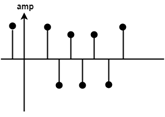Classification of Control System
The control system may be classified in a number of ways. Some popular classifications are:
- Depending on the methods analysis and design, the system can be linear or non-linear.
- Depending upon the type of signals, the system can be time-varying, time-invariant continuous data, discrete data, modulated or unmodulated control system etc.
- Depending on the type of system component, the system can be electromechanical, biological, hydraulic, thermal or pneumatic control system etc.
- Depending upon the primary purpose, the system can be position control, velocity control etc.
Linear and Non-linear system
Linear system: A system is known as linear if and only if it possesses both homogeneity and superposition properties. Superposition implies that an input r1 (t) gives an output c1 (t) and another input r2 (t) gives the output c2 (t). If two inputs are applied together then the output will be the sum of two outputs:
r1(t) + r2(t) = c1(t) + c2(t)
If our input-output relationship is a straight line passing through the origin, then the system obeys the superposition property. The straight line passing through origin means that the output is zero (0) for zero (0) input.
If the input increases for any system K time from r1 (t) to Kr1 (t) then the magnitude of the output is also increased from c1 (t) to Kc1 (t) then this property is known as homogeneity. This property is a necessary condition for a system to be linear.
Non-Linear System: Non-linear system does not satisfy the superposition principle or homogeneity property, or it is the system whose output is not directly proportional to its input. Here, the stability of the non-linear system depends upon the input and initial status of the system.
In a linear system, if the input is sinusoidal and starts increasing, then the output will also increase but the form will remain the same.
However, in a non-linear system, the form may change with changes in the magnitude of the input. It means if the input is sinusoidal then the output is non-sinusoidal, i.e., the non-linear system.
Time-Variant and Invariant Control System
The system whose parameter vary with time is known as a time-varying control system and the system whose parameter does not vary with time is called as a time-invariant control system.
Continuous data and discrete data control system
In a continuous system, all system variables are the function of continuous time variable ‘t.’ At any time’t’ they are dependent on time thus they are called continuous data control system.
In discrete data control system, if the signal is not continuously varying with time but it is in the form of pulses, the controlled system is called discrete data control system.
It is of two types
- Sampled
- Digital
If the signal is in the form of pulse data, the system is called a sampled data control system. The sampled form is shown in the below-drawn diagram.

If the signal is in the form of digital code, the system is called a digital control system.
Dynamic and Static system
If in any system the input does not change with the time then the output will also not change with time such system is known as a static system. For example, an electric circuit with resistances.
If the output of the system is a function of time even when the input is constant, such system is called Dynamic system like R, L, C circuit because inductance and capacitance are energy storing devices.
